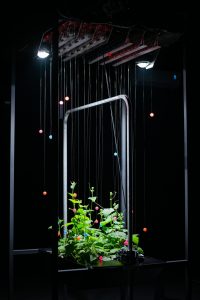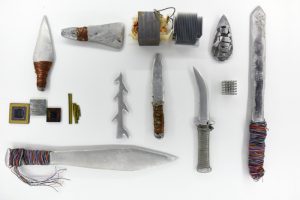Ayah Bdeir is a media artist, engineer and interaction designer whose work I’ve been following her work for a few years from the time she was graduating from MIT Media Lab. She is now an artist fellow at Eyebeam in New York.
Her most recent project aims to contribute to the democratization of technology and the explosion of creativity by challenging black-boxed technology but also our absent-minded consumption of all things new, pre-packaged and electronic.
littleBits is a growing library of preassembled circuit boards, made easy by tiny magnets. All logic and circuitry is pre-engineered, so you can play with electronics without knowing electronics. Tiny magnets act as connectors and enforce polarity, so you can’t put things in the wrong way. And all the schematics will be shared under an opensource license so you can download, upload, suggest new bits and hopefully see them come to life.
I went to see the littleBits exhibition while i was in New York, the bits and pieces looked like precious candies in a square glass frame, the way littleBits works seems indeed to be very accessible even for clichés like me who need assistance when the light bulb is burnt out. But that doesn’t mean i don’t have questions for Ayah:
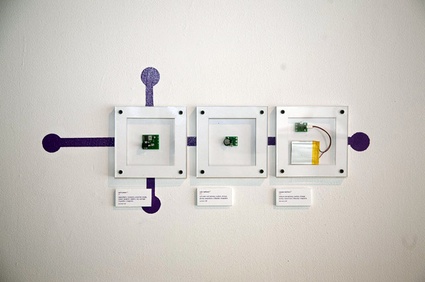 littleBits’ library is growing. do you see an end to the list of littelBits modules you’ll have to develop?
littleBits’ library is growing. do you see an end to the list of littelBits modules you’ll have to develop?
Part of the reason why the version1 of littleBits took time to come out is that we wanted to really focus on making a solid platform that’s extendable. the littleBits have 3 lines, a power line, a signal line and a ground line, and a huge amount of things we can think of at this time can somehow fit into the platform. The main trick is to think in terms of interaction design. For every new module, we think: what are the behaviors we would need the module to do? and we pre-program the module to do those behaviors, providing some ability to control (buttons, switches knobs, etc). However, of course, some modules will be too complex or big to be able to get away with interaction design in order to embody their experience . For example so far, i am not sure how to develop a useful multitouch screen.
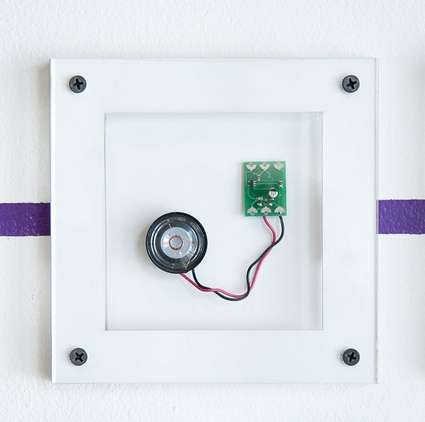 Speaker littleBits
Speaker littleBits
How do you imagine to spread littleBits around? Would you sell them in kits or organize workshops and invite people to design and craft their own based on your experience?
Both. Right now the starter kit is for sale, and soon more advanced and extended kits will be available, and also individual bits. But also, more importantly i would like to organize workshops where we give the littleBits to people and ask them to make something, and see how people with different interests and backgrounds interpret the idea of ‘geeky fun’. Eventually we are going to set up a littleBits gallery online where people can post their creations and show off their stuff.
I’m also hoping that a community will form around littleBits. People who suggest their own modules, who design them, who make them, who buy them, hopefully they can spread the word and bring them into their work and play places. It started a little, we had over 500 people on our mailing list before the bits were even ready.
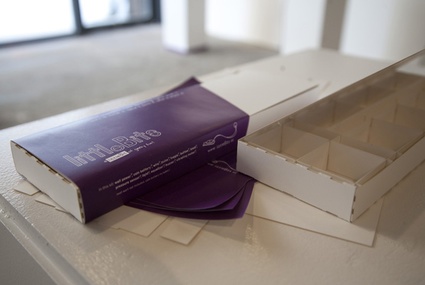 Even if littleBits makes prototyping easier, most people still need to know the basics about how electrical systems work. Is that something that the project addresses as well?
Even if littleBits makes prototyping easier, most people still need to know the basics about how electrical systems work. Is that something that the project addresses as well?
A lot of these issues, we try to address that through design. i worked with Luma Shihab-Eldin who did all graphics for littleBits to come up with a way to explain electronic circuits in an easy way. For example: the bits are divided into 4 categories, with each category represented by a color (see attachment): Power (magenta), Input (blue), Output (green) and Wire (orange). And the instructions tell you, to make a circuit you need one magenta, at least one green and then blue and orange are optional. Also, as i was saying above, we are looking at electronic modules as if they were electronic appliances. Just like a blender has 3 modes and 3 buttons to control speed of the motor, some littleBits have controls on the board, a potentiometer to adjust length of time (pulse module), a switch to determine direction of rotation (dc motor module), etc.
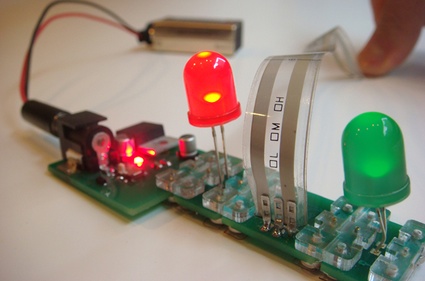
So like electronic appliances, most functions are pre-programmed. But eventually if people want to do more sophisticated things with electronics, they have to learn. we are hoping with littleBits will make electronics sexy, and when you see how empowering it is, then you will want to learn more, as opposed to thinking it’s too hard and boring.
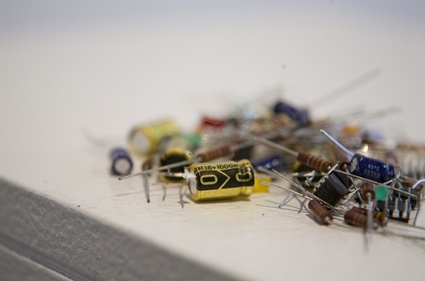 Why did you chose magnets? is it simply because magnets are ‘fun’ as your video says?
Why did you chose magnets? is it simply because magnets are ‘fun’ as your video says?
The idea for magnets came from a very unusual place. i was doing another project with electronic panties from syria (www.haniyassecrets.com). And in one of them, the panty was held up by an electro magnet, that was remote controlled. So at the time Jeff Hoefs and I were struggling to find tiny, polarized connectors but still be easy to assemble (as opposed to molex connectors etc), and then it hit me: Magnets! magnets are electrically conductive, easy to put together, and will litterally prevent you from connecting littleBits the wrong way no matter how hard you try. The fun part was just an added bonus.
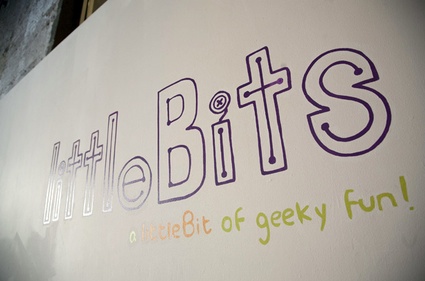 What are the next steps for the project?
What are the next steps for the project?
The immediate next step is maker faire. I will be going to maker faire in San Mateo on may 30th and 31st and selling the littleBits starter kit and trying to present them to talk to people and get feedback. then the next step is to focus on developing a strong web platform for people to share littleBits ideas and schematics through. And after that to do workshops, try to test littleBits out in high schools and design schools, and see how that goes. Of course, along the way, always to continue to develop new modules!
Thanks Ayah!
Also by Ayah Bdeir: SP4M. D0 Y OU SWA1LOW? and random search.
Images Jonathan Hokklo 2009, more on littleBits exhibition page.


